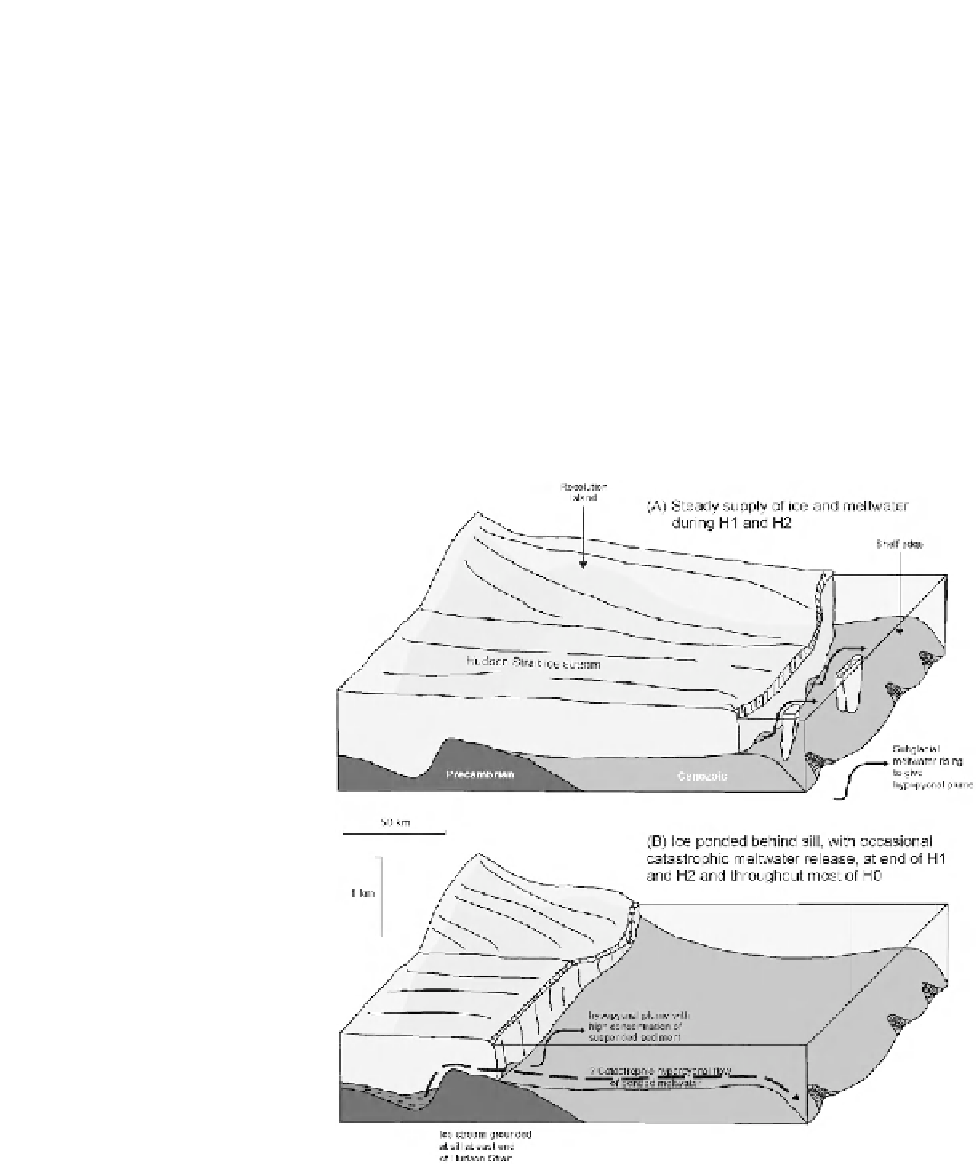Geoscience Reference
In-Depth Information
hypopycnal plumes, ice rafting, and deposits from turbidity
currents, differentiated based on geographic distribution and
sediment facies [Rashid et al., 2003a; Rashid and Piper,
2007]. The amount of sediment transported and deposited in
H1 was more than four times higher than in H0, with greatest
uncertainty in the total amount of sediment transported to the
SAP in each event. Further, the estimates suggest that during
H0, ~150 km
3
of sediment was transported by sediment
gravity
deepwater H layers, for example, core Hu97-16 [Rashid,
2002].
Thus, H0 appears to have been similar to the latest stage of
H1 and H2, in which turbidite muds were deposited both
proximally in the Labrador Sea and through NAMOC to the
SAP. Estimated volumes of turbidites are similar in H1 and
H0. The main phase of H1 and H2, resulting in plume and
ice-rafted deposits, was 30 times more voluminous than H0
(Table 2).
During H1, the Hudson Strait ice stream extended at least
to the middle of the continental shelf and perhaps brieyto
the shelf break (Figure 9a), as reviewed above. The duration
of ice retreat and iceberg supply has been estimated as many
hundreds of years [Hillaire-Marcel et al., 1994; Dowdeswell
et al., 1995; Thomson et al., 1995], implying that supply of
fresh water, icebergs, and sediment to form H1 and the
ows and 20 km
3
in surface plumes, with a minor
amount in icebergs. In contrast, during H1, a similar quantity
of sediment was transported by sediment gravity flows, but
sediment transported by surface plumes and icebergs is esti-
mated 30 times greater at ~600 km
3
. The carbonate turbidite
muds immediately followed the deposition of the main
phases of H1 and H2, based on the correlation of sedimen-
tological units A
-
Cde
ned by Rashid et al. [2003a] from
Figure 9.
Schematic cartoons showing ice conditions and sediment supply through Hudson Strait. (a) Conditions during
main phase of H1 and H2, with the Hudson Strait ice stream extending across much of the continental shelf. Principal
sediment transport mechanism in icebergs and in hypopycnal sediment plumes with low concentrations of sediment is
shown. (b) Conditions during H0, similar to the terminal phase of H1 and H2, when the ice stream was pinned at the
shallow sill at the eastern end of Hudson Strait. Buildup of meltwater behind the sill led to catastrophic subglacial outburst
with high sediment concentrations, leading to hyperpycnal
flow across the shelf and into deep water.









Search WWH ::

Custom Search